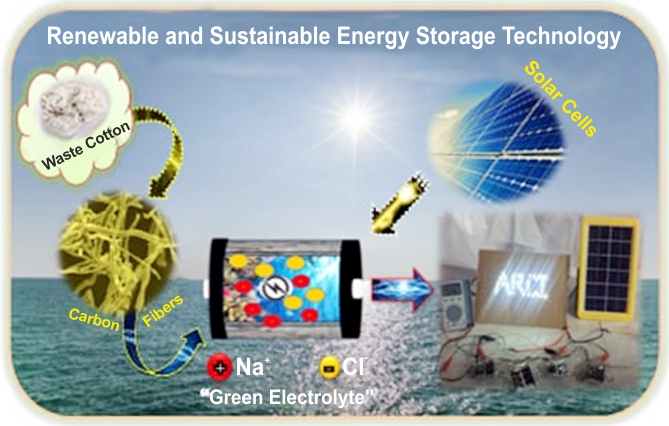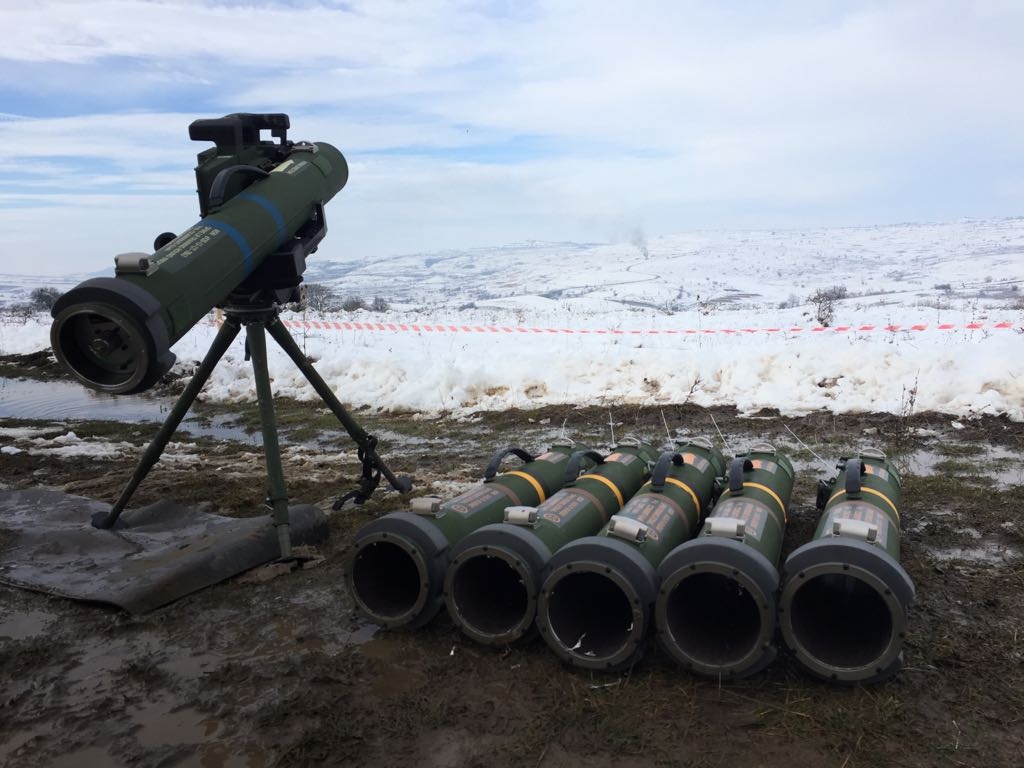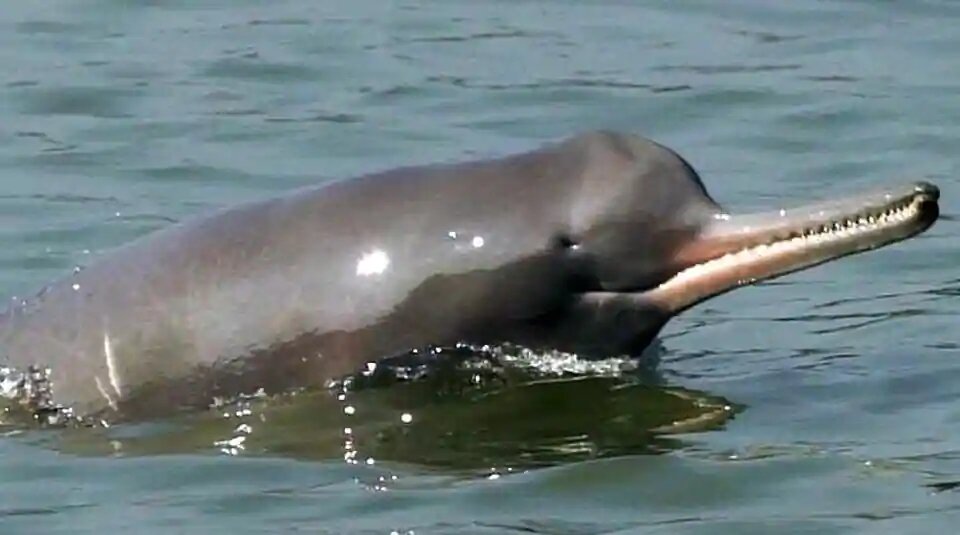Governance
PRAGYATA: Guidelines on Digital Education
Why in News
Recently, the Ministry of Human Resource Development (MHRD) has released guidelines on digital education titled 'PRAGYATA'.
- The guidelines have been prepared by the National Council of Educational Research and Training (NCERT).
- These are only advisory in nature and state governments can formulate their own rules, based on local needs.
- The guidelines include eight steps of online/digital learning i.e. Plan- Review- Arrange- Guide- Yak (talk)- Assign- Track- Appreciate.
Key Points
- Digital Access:
- Over 25 crore students across the country have been out of school since mid-March 2020. (owing to Covid-19 pandemic). The guidelines acknowledge that these students live in households which fall into different categories:
- Those who have computers or smartphones with 4G internet access.
- Those with smartphones but limited or no internet access.
- Those with television with cable or DTH.
- Those with a radio set or a basic mobile phone with FM radio.
- And those with no communication devices at all.
- It emphasised the aim of digital classrooms is not to try and recreate Face-to-Face (F2F) classrooms over the internet.
- Over 25 crore students across the country have been out of school since mid-March 2020. (owing to Covid-19 pandemic). The guidelines acknowledge that these students live in households which fall into different categories:
- Need for Survey: It advises schools to first survey the digital infrastructure available with teachers as well as students, the levels of parental involvement before making decisions about the mode of teaching.
- Therefore, schools must also make arrangements to reach students who do not have access to any digital infrastructure at home.
- Duration: For kindergarten, nursery and pre-school, only 30 minutes of screen time per day for interacting with parents is recommended.
- Schools can hold live online classes for a maximum of 1.5 hours per day for Classes 1-8, and 3 hours per day for Classes 9-12.
- Synchronous or Real-time Communication: This is real-time teaching and learning that can happen collaboratively at the same time with a group of online learners or individuals, and teachers allowing instant feedback, e.g. online teaching through video conference, audio conference, using satellite or telecommunication facilities.
- However, schools should not assume that teaching-learning through it is the only requirement in order to support effective digital learning.
- Asynchronous Learning: Apart from live classes, it offered a number of recommendations for asynchronous learning with tools to allow students to download lessons or listen to radio and TV programmes, communicate through Whatsapp and SMS, study on their own and undertake creative projects.
- Health Issues: Children exposed to digital technologies or gadgets for a longer time are prone to severe health issues.
- Hence sitting with digital gadgets for longer hours or their excess use can be avoided by designing age appropriate schedules.
- Cyber Safety: It also recommends ethical practices including precautions and measures for maintaining cyber safety.
- Convergence: It envisages convergence with the government initiatives on digital education e.g. SWAYAM Prabha, SWAYAM, DIKSHA and Radio Vahini, Shiksha Vaani.
NCERT
- The National Council of Educational Research and Training (NCERT) is an autonomous organisation of the Government of India which was established in 1961 as a literary, scientific and charitable Society under the Societies Registration Act, 1860.
- It aims at reforming the school education system through research, training, policy formulation and curriculum development.
- Headquarters: New Delhi
Science & Technology
Hope: UAE Mars Mission
Why in News
The United Arab Emirates (UAE) Mars Mission or ‘Hope’ is scheduled for launch on 16th July, 2020.
- It is one of three missions launching to Mars this month. The USA and China, both have surface rovers in the late stages of preparation.
Key Points
- Hope Mission:
- It is the first interplanetary mission for the Arab World.
- The ‘Hope Orbiter’ will be lifted on an H-IIA rocket from Mitsubishi Heavy Industries, a machinery maker in Japan. It will be launched from Tanegashima Island in Japan.
- The UAE does not have its own rocket industry.
- Once launched, it is expected to arrive in orbit around Mars in February 2021 (the year of 50th anniversary of UAE’s founding).
- It costs about USD 200 million and will carry three instruments: an infrared spectrometer, an ultraviolet spectrometer and a camera.
- Expected Benefits:
- It will give planetary scientists their first global view of Martian weather at all times of day.
- Over its two-year mission, it will investigate how dust storms and other weather phenomena near the Martian surface speed or slow the loss of the planet’s atmosphere into space.
- Significance: The country's primary aim is to inspire school children and spur its science and technology industries, which, in turn, will enable the Emirates to tackle critical issues like food, water, energy and a post-petroleum economy.
- Previous UAE Space Missions:
- Has built and launched three earth-observing satellites in collaboration with a South Korean manufacturer.
- In 2019, the UAE bought a seat on a Russian Soyuz rocket and sent its first astronaut for an eight-day stay at the International Space Station.
- Other Two Missions on Mars:
- NASA’s Mars rover, Perseverance, with instruments to search for chemical signs of past life, is scheduled to launch on 30th July, 2020.
- China is also launching an ambitious mission to Mars, Tianwen-1.
- Reasons Behind Timing of Mars Missions:
- The timing is dictated by the opening of a one-month window in which Mars and Earth are in ideal alignment on the same side of the sun, which minimizes travel time and fuel use. Such a window opens only once every 26 months.
- Existing Missions on Mars:
- Only the USA has successfully put a spacecraft on Mars. Two NASA landers are operating on the Mars i.e. InSight and Curiosity.
- Six spacecraft that are exploring Mars from orbit include three from the USA, two European and one from India (Mars Orbiter Mission).
- Objective Behind Mars Exploration:
- Despite being starkly different in many ways, the Red Planet has several Earth-like features– such as clouds, polar ice caps, volcanoes, and seasonal weather patterns.
- For ages, scientists have wondered whether Mars can support life. In the past few years, Mars missions have been able to discover the possible presence of liquid water on the planet, either in the subsurface today or at some point in its past.
Science & Technology
Low-cost Supercapacitor
Why in News
Recently, scientists at the International Advanced Research Centre for Powder Metallurgy and New Materials (ARCI) have developed a simple, low-cost, environment-friendly, and sustainable supercapacitor device.
- ARCI is an autonomous organization of the Department of Science and Technology, Government of India.
Supercapacitor
- Supercapacitor is a next-generation energy storage device. They are also known as ultracapacitors.
- It has significant advantages such as high power density, long durability, and ultrafast charging characteristics as compared to conventional capacitors and Lithium-Ion batteries (LIB).
- Main components of supercapacitors include electrode, electrolyte, separator, and the current collector.
- The electrode and electrolyte are the pivotal components, which directly determine the electrochemical behaviour of the supercapacitors.
- The manufacturing cost of electrode materials, as well as electrolytes account for a major portion of the supercapacitor manufacturing cost.
- An electrode is a solid electric conductor that is used to take an electric current to or from a source of power.
- An electrolyte is a substance that produces an electrically conducting solution when dissolved in a polar solvent, such as water.
Key Points
- Supercapacitor Device:
- The supercapacitor is developed from industrial waste cotton based electrode & natural seawater electrolyte.
- Industrial waste cotton was converted into highly porous carbon fibers by activation process and then utilised to make high-performance supercapacitor electrodes.
- Natural seawater was explored as an environment-friendly, cost-effective and alternative aqueous electrolyte.
- Benefit:
- This supercapacitor showed great potential for practical implementation.
- It exhibited maximum capacitance, good durability and high efficiency.
- Capacitance is the ability of a system to store an electric charge.
- Efficiency denotes the charge transfer in a system facilitating an electrochemical reaction.
- When integrated with a solar cell, the supercapacitor will become a low cost, eco-friendly, efficient and self-powering device.
- It has a long life cycle and can be used as maintenance-free power supply.
- It can also overcome the drawbacks of the intermittent nature of the solar irradiation.
- Conclusion:
- The development is an excellent example of creative science for the sustainable, green processes embedding principles of waste-to-wealth.
Governance
Spike-LR Anti-Tank Guided Missiles
Why in News
The India Army is set to place a repeat order for Spike-LR (Long Range) Anti-Tank Guided Missiles (ATGM) from Israel as part of emergency procurement.
- The decision comes in the backdrop of continuing tensions on the Line of Actual Control (LAC) with China.
Key Points
- Last year, the Army procured 12 launchers and around 250 missiles from Israel under the new emergency financial powers sanctioned by the Defence Ministry after the Balakot airstrike.
- Emergency Financial Powers:
- Under these, armed forces have been given a free hand to procure equipment worth up to Rs. 300 crore on a priority basis with deliveries stipulated to be completed in three months but extendable up to six months.
- Entirely new systems not in use were also allowed to be procured under the new powers.
- Spike-LR:

- These are the 4th generation Anti-Tank Missiles developed and manufactured by the Rafael Advanced Defence Systems, Israel.
- It is a portable anti-armour weapon system with a range of up to 4 km, which can be operated in fire-and-forget mode and in the fire, observe and update mode using the fibre-optic data link.
- These are used by infantry soldiers, special rapid reaction forces, ground forces and helicopter aircrew.
- It can work in non-line-of-sight (NLOS) mode allowing the gunner to operate from a covered position.
- The army recently decided to place a repeat order for 72,400 Sig 716 assault rifles from the USA as well.

- They will replace the existing Indian Small Arms System (Insas) rifles manufactured locally by the Ordnance Factories Board.
- They will be used by the troops in the counter-terrorism operations and frontline duties on the Line of Control (LoC).
- India acquired the rifles under the fast-track procurement (FTP) programme.
- The remaining forces would be provided with the AK-203 rifles, which are to be produced jointly by India and Russia at Amethi ordnance factory.
- The Army has a much larger requirement for ATGMs which will be met through indigenous Man-Portable ATGM under development by the Defence Research and Development Organisation (DRDO).
Science & Technology
Covid-19 Specific Memory T Cells
Why in News
Recent studies have shown that people unexposed to and not infected with Covid-19 (caused by SARS-CoV-2 or Novel Coronavirus) may still exhibit T cell responses specific to other coronaviruses.
Key Points
- A huge number of adults are exposed to four different coronaviruses that cause common cold and studies have shown that 20-50% of healthy people display SARS-CoV-2-specific memory T cells.
- The healthy people studied were those tested prior to the pandemic or have not been infected with novel coronavirus.
- Memory T cells protect against previously encountered pathogens.
- It is thought that SARS-CoV-2-specific T cell responses seen in healthy people might arise from memory T cells derived from exposure to ‘common cold’ coronaviruses.
- However, it is not known that the presence of pre-existing immunity from memory T cells offers clinical relevance, when exposed to SARS-CoV-2.
- Measuring pre-existing immunity and correlating it with infection and severity of disease is the only way to find out its role in protection against SARS-CoV-2.
- However, the relationship between the infections by and immunity from common cold coronavirus and age is not well established. That is why it is unclear why children do not show severe symptoms, while older people do.
- These considerations underline how multiple variables may be involved in potential pre-existing partial immunity to Covid-19.
- Pros:
- It is believed that people with a high level of pre-existing memory T cells could mount a faster and stronger immune response upon exposure to the virus and thereby limit disease severity.
- T cells could potentially facilitate an increased and more rapid neutralizing antibody response against the virus.
- It is believed that people with a high level of pre-existing memory T cells could mount a faster and stronger immune response upon exposure to the virus and thereby limit disease severity.
- Cons:
- The pre-existing immunity can reduce the immune responses that the vaccine causes through a mechanism called the ‘original antigenic sin’.
- Original antigenic sin, also known as the Hoskins effect, refers to the propensity of the body's immune system to preferentially utilize immunological memory based on a previous infection when a second slightly different version of that foreign entity is encountered.
- It can also lead to antibody-mediated disease enhancement, where antibodies present at sub-neutralising concentrations can actually augment virus infection and cause more severe disease.
- The pre-existing immunity can reduce the immune responses that the vaccine causes through a mechanism called the ‘original antigenic sin’.
T Cells
- T cells are so called because they are predominantly produced in the thymus.
- They recognise foreign particles (antigen) by a surface expressed, highly variable, T cell receptor (TCR).
- There are two major types of T cells: the helper T cell and the cytotoxic T cell.
- As the names suggest, helper T cells ‘help’ other cells of the immune system, whilst cytotoxic T cells kill virally infected cells and tumours.
- The severity of disease can depend on the strength of these T cell responses.
Governance
Data on Covid-19 After-effects
Why in News
Recently, the Directorate General of Health Services (DGHS) has started collecting data on post Covid-19 medical complications from leading central government and other hospitals across India.
- DGHS is a repository of technical knowledge concerning public health, medical education and health care. It is an attached organisation of the Ministry of Health and Family Welfare.
Key Points
- Leading physicians from across the country have indicated that they are seeing some worrying medical complications among the recovered patients.
- Stress on the body associated with Coronavirus could lead to long and short term complications.
- Data is being collected on the medical complications including Covid-19-induced diabetes, impaired lung, heart, liver and brain functions along with acute fatigue and dyspnea (shortness of breath).
- It would help the Health Ministry to come out with guidelines on further care and treatment of those who had recovered.
- Data Highlight:
- 86% of the Covid-19 cases in the country were reported from 10 states, with Maharashtra and Tamil Nadu accounting for 50%.
- The overall recovery rate had climbed from 47.6% (31st May) to 63.02% currently.
- Trends in Recovered Patients:
- Patients took a long time to fully recover with complaints of feeling lethargic, completely drained out, mentally depressed with the inability to concentrate.
- Those who developed pneumonia, lung function improves within some months of recovery but some may not normalise due to the fibrosis (development of fibrous connective tissue as a reparative response to injury or damage).
- Possibilities of long-term lung function deterioration and vascular diseases.
- Indications of Covid-induced diabetes.
- After-effects of Covid-19:
- The damage is caused by thrombosis in the small vessels that ultimately damages lung tissues and other organs, including the heart and can lead to fatal pulmonary embolism.
- Thrombosis is the formation of a blood clot, known as a thrombus, within a blood vessel. It prevents blood from flowing normally through the circulatory system.
- Pulmonary Embolism (PE) is a condition in which one or more arteries in the lungs become blocked by a blood clot.
- The damage is caused by thrombosis in the small vessels that ultimately damages lung tissues and other organs, including the heart and can lead to fatal pulmonary embolism.
Biodiversity & Environment
Decrease in Dolphin Number: Chambal River
Why in News
According to the latest census report prepared by the Madhya Pradesh forest department, the number of dolphins in Chambal river has been reduced by 13% in 4 years.
- There are just 68 dolphins left in the 435-kilometre-long Chambal river sanctuary which passes through three states i.e. Madhya Pradesh, Uttar Pradesh and Rajasthan. Gangetic Dolphins are the sanctuary’s main attraction.
- The decreasing trend is continuing from 2016 when there were 78 dolphins.
Key Points
- The maximum carrying capacity of dolphins in Chambal is 125.
- The carrying capacity of an environment is the maximum population size of a biological species that can be sustained in that specific environment, given the food, habitat, water, and other resources available.
- The dolphins were spotted for the first time in 1985 in Chambal river (a tributary of Yamuna) near Etawah, Uttar Pradesh. That time, the number was more than 110.
- Reasons:
- Unfavourable Habitat: It faces the threat of hunting and entanglement in fishing gear due to fragmented habitats.
- Poaching: Fragmented habitats lead to the problem of poaching for not only dolphins, but also for gharials.
- Illegal Sand Mining: It is rampant in Bhind and Morena in MP and Dholpur in Rajasthan and putting the whole ecosystem of the river in danger.
- Further, the forest team never gets support from locals.
- In 2006, the Supreme Court’s Central Empowered Committee (CEC) ordered a ban on mining in the sanctuary area to save the flora and fauna of the river.
- Consumption of Water: Chambal is a lifeline for three states i.e. MP, UP and Rajasthan and the locals are withdrawing water daily.
- It has led to gradual decrease in the water levels and needs to be addressed properly to save the dolphins as well as gharial.
- Lack of Studies: Dolphins are a sensitive animal. There is a need of study on their favourable environment and communication system.
- The Forest Department of MP has collaborated with the scientists of Wildlife Institute of India (WII) to do a research for safeguarding and increasing the population of dolphins in Chambal.
- Scientific Name: Platanista gangetica
- It is a highly intelligent freshwater mammal placed into the infraorder Cetacea.
- It is India's national aquatic animal and is popularly known as ‘Susu’
- Habitat: It is found in parts of the Ganges-Meghna-Brahmaputra and Karnaphuli-Sangu river systems in India, Nepal, and Bangladesh.
- It requires at least 3 metre depth and 266.42-289.67 m3 per sec flow of water for sustainable habitat.
- It is among the four freshwater dolphins in the world. The other three are:
- The ‘Baiji’ now likely extinct from the Yangtze River in China,
- The ‘Bhulan’ of the Indus in Pakistan, and
- The ‘Boto’ of the Amazon River in Latin America.
- These four species live only in rivers and lakes.
- Characteristics: It has rudimentary eyes and uses echolocation (through ultrasonic sound) to navigate and hunt.
- Threats: Habitat destruction, Poaching, Pollution
- Protection Status:
- International Union for Conservation of Nature (IUCN): Endangered
- Wildlife (Protection) Act, 1972: Schedule 1
- Convention on International Trade in Endangered Species of Wild Fauna and Flora (CITES): Appendix-I.
- Vikramshila Gangetic Dolphin Sanctuary (VGDS) in Bihar’s Bhagalpur district is India’s only sanctuary for dolphins.
Important Facts For Prelims
World Youth Skills Day
Why in News
15th July is marked as World Youth Skills Day. It was designated by the United Nations General Assembly (UNGA) in 2014.
Key Points
- Aim: To achieve better socio-economic conditions for today's youth in terms of challenges of unemployment and under-employment.
- Theme for 2020: "Skills for a Resilient Youth".
- According to UNGA, Covid-19 has led to the worldwide closure of training institutions, threatening the continuity of skills development.
- Nearly 70% of the world’s youth are affected by school closures.
- According to the Global Trends for Youth 2020 report, since 2017, there has been an upward trend in the number of youth not in employment, education or training (NEET).
- Global Trends for Youth report is released by International Labour Organisation (ILO).
- Thus it has become important to impart relevant skills to the youth which can help them in the long run and successfully manage evolving challenges.
- 2030 Agenda: Education and training are central to the achievement of the 2030 Agenda for Sustainable Development.
- The vision of the Incheon Declaration: Education 2030 is fully captured by Sustainable Development Goal-4, which aims to “Ensure inclusive and equitable quality education and promote lifelong learning opportunities for all”.
- Education 2030 devotes attention to technical and vocational skills development, acquisition of technical and vocational skills for employment, decent work and entrepreneurship.
- It also focuses on the elimination of gender disparity.
- Skill India Mission: The day also marks the 5th anniversary of the launch of Skill India Mission.
- Skill India is an initiative of the Government of India which has been launched to empower the youth of the country with skill sets which make them more employable and more productive in their work environment.
- Skill India offers courses across several sectors which are aligned to the standards recognised by both, the industry and the government under the National Skill Qualification Framework.





